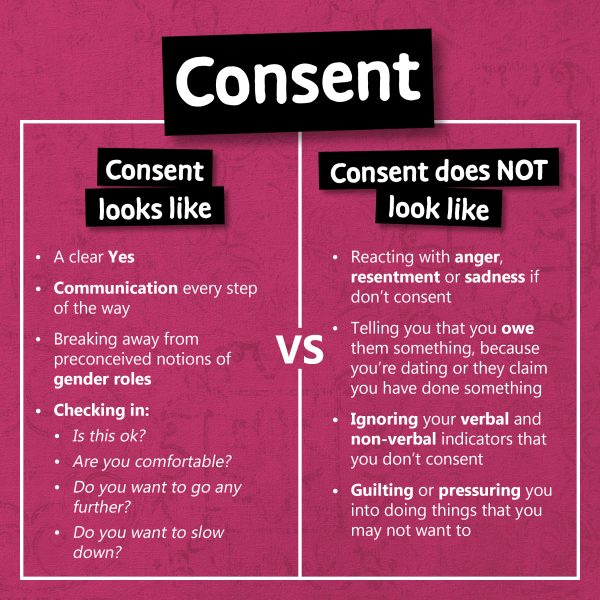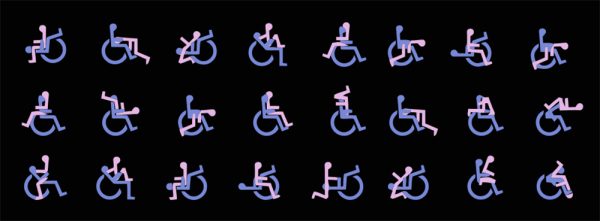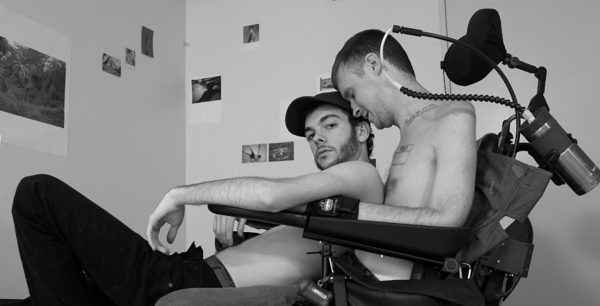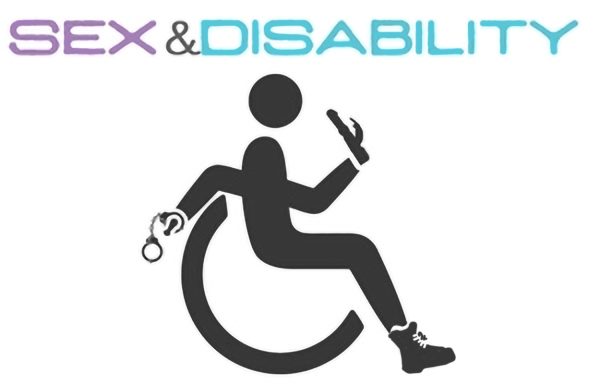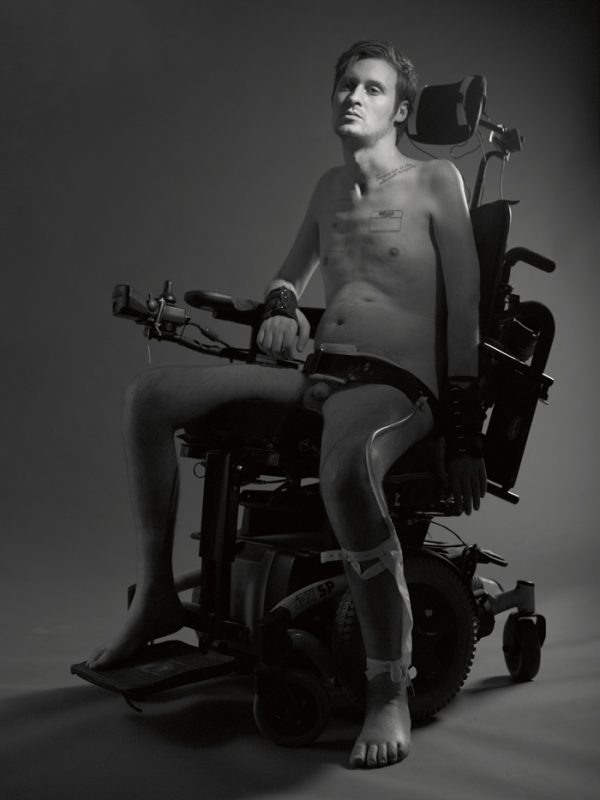This comprehensive guide explores how to navigate BDSM and disabilities, debunk myths and stereotypes, adapt practices for different abilities, build a safe and inclusive community, find compatible partners, and create a personalized experience.
BDSM is a complex and multifaceted practice that involves consensual power exchange and a range of sexual and non-sexual activities. For those with disabilities, exploring BDSM can offer a unique opportunity for sexual expression and personal empowerment.
However, the intersection of BDSM and disabilities is often misunderstood, with many misconceptions and stereotypes surrounding this topic.
This blog post aims to provide a comprehensive guide on how to navigate BDSM and disabilities, including understanding common misconceptions, adapting practices for different abilities, building a safe and inclusive community, finding compatible partners, and creating a personalized experience.
Understanding BDSM and Disabilities
BDSM is a diverse practice that involves a range of sexual and non-sexual activities, including bondage, domination, submission, and sadomasochism. For those with disabilities, exploring BDSM can offer a unique opportunity for sexual expression and personal empowerment.
However, the intersection of BDSM and disabilities is often misunderstood, with many misconceptions and stereotypes surrounding this topic.
Common Misconceptions About BDSM and Disability
One of the most common misconceptions about BDSM and disability is that disabled individuals are not capable of engaging in BDSM. This misconception is rooted in ableism, which assumes that disabled individuals are inherently asexual or unable to engage in sexual activities.
This belief is entirely untrue, and disabled individuals have the right to explore their sexuality and engage in BDSM practices.
Another common misconception about BDSM and disability is that BDSM is inherently abusive or exploitative. While it is true that BDSM involves power exchange and potentially risky activities, it is crucial to recognize that all BDSM practices should be consensual and negotiated between all parties involved.
Disabled individuals are just as capable of giving and receiving consent as non-disabled individuals.
Importance of Consent and Communication
Consent and communication are critical components of BDSM and must be approached with even more care and attention when engaging with disabled individuals. Consent should be ongoing and explicitly given, and communication should be clear and accessible.
Disabled individuals may have unique communication needs, such as the use of assistive devices or alternative forms of communication.
It is essential to recognize that disabled individuals may have limitations or boundaries that may affect their ability to engage in certain BDSM activities. It is crucial to discuss these limitations and boundaries openly and honestly and to respect them.
Overall, understanding common misconceptions and prioritizing consent and communication is essential when exploring BDSM and disabilities. By approaching this topic with sensitivity and respect, disabled individuals can experience the same empowerment and sexual expression that BDSM offers to all individuals.
Dispelling Myths and Stereotypes
The intersection of BDSM and disabilities is often subject to harmful myths and stereotypes that can be damaging to disabled individuals' self-esteem and sexual identity. Dispelling these myths and challenging stereotypes is crucial in advocating for equal opportunity and access for disabled individuals in BDSM.
Debunking Myths about Disabled Individuals in BDSM
One of the most common myths about disabled individuals in BDSM is that they are inherently vulnerable and, therefore, at greater risk of exploitation or abuse. This belief is entirely untrue and perpetuates harmful stereotypes about disabled individuals' sexuality and agency.
Disabled individuals have the right to engage in BDSM practices on their terms and with the same respect and consent as non-disabled individuals.
Another myth about disabled individuals in BDSM is that they are unable to experience sexual pleasure or desire. This belief is rooted in ableism and disregards the sexual agency and diversity of disabled individuals.
Disabled individuals can experience sexual pleasure and desire, and BDSM can offer a unique opportunity for sexual expression and exploration.
Challenging Stereotypes Surrounding Ability and Desire
Disabled individuals face stereotypes and ableism that assume they are not sexually desirable or capable of engaging in sexual activities. These stereotypes can be particularly damaging in BDSM, where sexual desire and expression are central to the practice.
It is crucial to challenge these stereotypes and advocate for the sexual agency and diversity of disabled individuals.
Challenging stereotypes also involves recognizing that disabled individuals may have different needs and desires than non-disabled individuals. For example, disabled individuals may require assistive devices or alternative forms of communication to engage in BDSM practices.
It is essential to approach these needs with sensitivity and respect and to prioritize accessibility and inclusivity in BDSM spaces.
Advocating for Equal Opportunity and Access
Advocating for equal opportunity and access for disabled individuals in BDSM involves recognizing that ableism and inaccessibility can be barriers to participation. BDSM spaces should be accessible and welcoming to disabled individuals, and resources and support should be available to facilitate their exploration of BDSM practices.
Representation and visibility of disabled individuals in BDSM spaces can also be crucial in challenging stereotypes and advocating for inclusivity and accessibility.
Overall, dispelling myths and challenging stereotypes surrounding ability and desire is essential in advocating for equal opportunity and access for disabled individuals in BDSM. By prioritizing inclusivity, accessibility, and representation, BDSM can become a space that celebrates the sexual diversity and agency of all individuals, regardless of ability.
Adapting BDSM Practices for Different Abilities
Adapting BDSM practices for different abilities is crucial in ensuring that disabled individuals can explore BDSM safely and comfortably. This involves identifying limitations and boundaries, adjusting techniques for varying levels of ability, utilizing assistive devices and tools, and considering safety considerations for specific disabilities.
Identifying Limitations and Boundaries
Disabled individuals may have physical, emotional, or psychological limitations that may affect their ability to engage in certain BDSM activities. It is crucial to discuss these limitations and boundaries openly and honestly with partners and to respect them.
This may involve adjusting techniques or exploring alternative activities that are more comfortable or accessible.
Adjusting BDSM Techniques for Varying Levels of Ability
BDSM techniques can be adapted for varying levels of ability, such as sensory play adaptations, bondage alternatives, and impact play modifications. Sensory play adaptations may involve utilizing different types of stimuli or exploring alternative forms of sensory play that are more comfortable or accessible.
Bondage alternatives may involve exploring different types of restraints or utilizing alternative methods of restraint, such as verbal or mental restraint. Impact play modifications may involve utilizing different types of impact implements or adjusting the intensity or frequency of impact.
The Role of Assistive Devices and Tools
Assistive devices and tools can play an essential role in adapting BDSM practices for different abilities. This may involve utilizing mobility aids, such as wheelchairs or crutches, or communication aids, such as sign language or speech-to-text technology.
Assistive devices and tools may also include specialized BDSM equipment, such as modified cuffs or restraints, that are designed to accommodate different abilities.
Safety Considerations for Specific Disabilities
When adapting BDSM practices for different abilities, it is crucial to consider safety considerations for specific disabilities. This may involve consulting with medical professionals or disability experts to ensure that adaptations are safe and appropriate. For example, individuals with mobility impairments may require additional safety considerations when engaging in impact play or bondage activities.
Overall, adapting BDSM practices for different abilities requires sensitivity, creativity, and a commitment to safety and consent. By prioritizing accessibility and inclusivity in BDSM spaces, disabled individuals can explore BDSM safely and comfortably and experience the same sexual expression and empowerment as non-disabled individuals.
Finding the Right Partner(s)
Finding the right partner(s) is an essential step in exploring BDSM with disabilities. Communicating needs and desires is crucial in establishing trust and understanding between partners.
Identifying Compatible Partners
Identifying compatible partners involves considering factors such as shared interests, communication style, and willingness to prioritize consent and safety. Disabled individuals may face additional barriers in finding compatible partners, such as ableism or limited accessibility.
It is essential to prioritize inclusivity and accessibility in BDSM spaces and to advocate for equal opportunity and access for disabled individuals.
Communicating Needs and Desires
Communicating needs and desires is critical in establishing trust and understanding between partners. This may involve discussing limitations or boundaries, utilizing alternative forms of communication, or using assistive devices or tools to facilitate communication.
It is crucial to approach communication with patience, sensitivity, and openness to ensure that all parties are comfortable and consenting.
It is also important to recognize that disabled individuals may have unique needs or desires that require specific adaptations or adjustments to BDSM practices. Communicating these needs and desires can help partners establish a more personalized and satisfying BDSM experience.
Establishing Trust and Understanding
Establishing trust and understanding between partners is essential in creating a safe and fulfilling BDSM experience. This involves prioritizing consent and communication, respecting boundaries and limitations, and considering the unique needs and desires of disabled individuals.
It is essential to approach BDSM with an open mind and a commitment to inclusivity, accessibility, and safety.
Overall, finding the right partner(s) involves identifying compatible partners and communicating needs and desires to establish trust and understanding.
By prioritizing consent and communication and recognizing the unique needs and desires of disabled individuals, disabled individuals can explore BDSM safely and comfortably and experience the same sexual expression and empowerment as non-disabled individuals.





